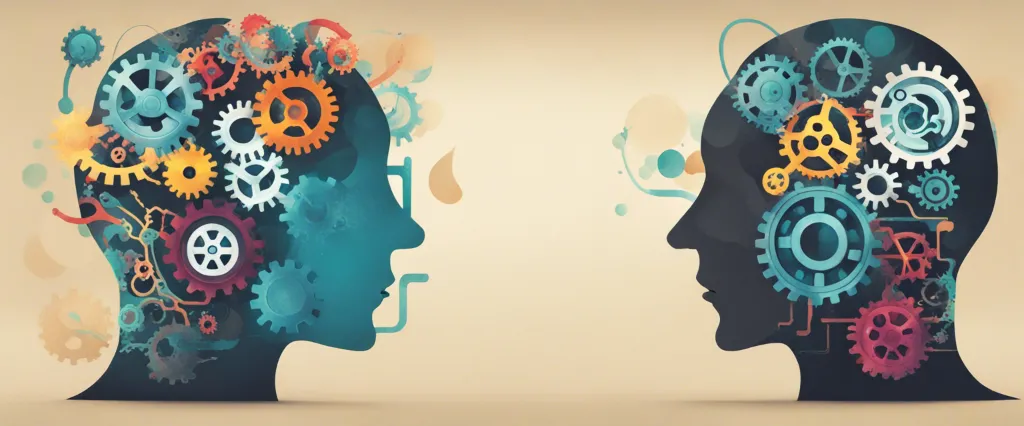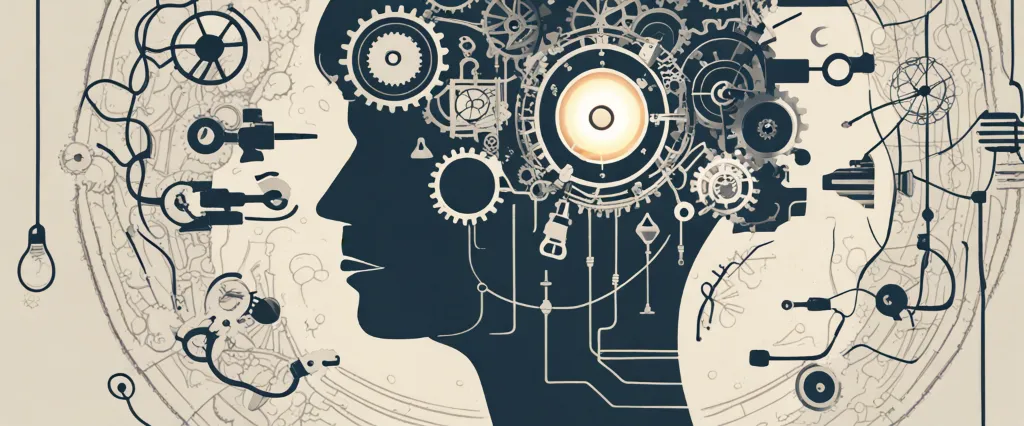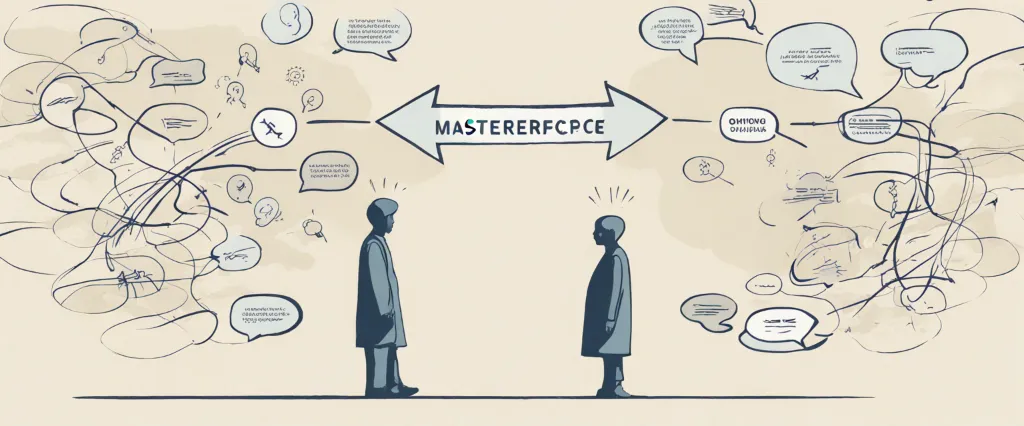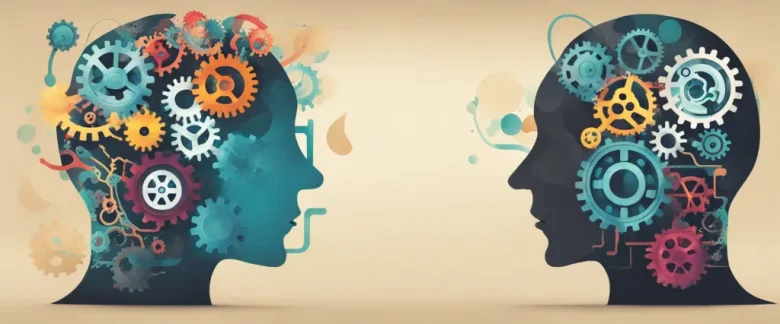
In his groundbreaking work, “How the Mind Works,” renowned cognitive scientist Steven Pinker delves deep into the complexities of the human mind, seeking to unravel its bewildering intricacies. Drawing upon various disciplines, from psychology and neuroscience to evolutionary biology, Pinker embarks on a captivating journey to shed light on the mechanisms that underlie our thoughts, emotions, and behaviors. Through his exceptional ability to merge scientific rigor with engaging storytelling, Pinker constructs an enlightening exploration of the mind’s inner workings, challenging conventional notions and offering a fresh perspective on the mysteries of human cognition. As a distinguished Harvard professor, Pinker has consistently pushed the boundaries of our understanding of the mind, earning international acclaim for his remarkable contributions to the field of cognitive science. With his compelling insights and unparalleled expertise, Pinker continues to inspire and revolutionize our understanding of what it truly means to be human.
Chapter 1: The Nature of the Mind
In Chapter 1 of “How the Mind Works” by Steven Pinker, the author explores the concept of the mind and its nature. Pinker argues that the mind is a system of organs in the brain, and it functions as a computational system.
Pinker begins by emphasizing that the mind is not a single, abstract entity but rather a collection of mental faculties that serve specific purposes. These faculties include perception, emotion, reasoning, and memory. Each of these faculties has evolved over time through the process of natural selection, as they have provided advantages for survival and reproduction.
The author also highlights that the mind is not separate from the brain, but rather a result of the brain’s complex organization. He explains that the mind can be understood through the lens of computational theory, as the brain processes information in a manner similar to a computer. This perspective allows for the investigation of various cognitive processes such as perception and decision-making.
Pinker further delves into the concept of mental representation, proposing that the mind operates by constructing internal models of the external world. These models are formed through the integration of sensory inputs, past experiences, and innate knowledge. Mental representations facilitate our ability to navigate the world, predict outcomes, and make decisions.
Furthermore, the author tackles the issue of consciousness and its relation to the mind. Pinker argues that consciousness emerges from the brain’s capacity to represent information and generate patterns. He suggests that consciousness is not a single, unified entity, but rather a collection of mental states that contribute to our awareness of our surroundings and ourselves.
In summary, Chapter 1 of “How the Mind Works” introduces the nature of the mind as a complex system of organs within the brain. Pinker explains how the mind is composed of various mental faculties that have evolved through natural selection. The author also emphasizes the importance of computational theories and mental representation in understanding cognitive processes. Finally, Pinker tackles the concept of consciousness and its relation to the mind, highlighting its emergence from the brain’s capacity to represent information.
Chapter 2: Evolutionary Psychology and Human Behavior
Chapter 2 of “How the Mind Works” by Steven Pinker explores the connection between evolutionary psychology and human behavior. Pinker begins by discussing the gene-centered view of evolution, which suggests that genes are the ultimate unit of selection and influence our behavior in order to increase their own reproductive success. According to this perspective, natural selection has shaped human psychology to solve specific problems faced by our ancestors.
Pinker argues that understanding evolution is key to understanding human behavior, as our minds are products of natural selection. He explores how evolutionary psychology can shed light on various aspects of human behavior, including aggression, sexuality, altruism, and cooperation. By examining these behaviors in light of their evolutionary significance, Pinker suggests that they can be better understood.
Additionally, Pinker emphasizes the importance of differentiating between ultimate and proximate explanations for behavior. Ultimate explanations address why a behavior evolved in the first place, while proximate explanations focus on what mechanisms in the brain and body produce the behavior. He emphasizes that ultimate explanations are not mutually exclusive with proximate ones, as both are essential to fully comprehend human behavior.
Pinker also touches on controversial topics, such as gender differences. He argues that while there are biological differences between males and females that can explain certain behaviors, it is crucial to avoid overgeneralizations and recognize the considerable overlap between sexes.
In summary, Chapter 2 of “How the Mind Works” delves into the idea that evolutionary psychology provides a framework for understanding human behavior. Pinker emphasizes the importance of both ultimate and proximate explanations, asserting that evolutionary forces have played a significant role in shaping human psychology and behavior.
Chapter 3: The Cognitive Architecture of the Mind
Chapter 3 of “How the Mind Works” by Steven Pinker delves into the cognitive architecture of the mind, focusing on how the brain’s modular structure enables various mental processes. Pinker argues that the human mind is not a unified entity but a collection of specialized modules that exhibit domain-specific processing capabilities.
He begins by discussing the theory of computational theory of mind, suggesting that the mind should be understood as an information-processing system. The central idea is that the mind is composed of modular programs, similar to the software running on a computer, each responsible for specific tasks. These programs work together to form the entire cognitive system.
Pinker introduces the idea of mental modules, which are specialized mechanisms that perform specific cognitive tasks, such as recognizing faces or understanding language. He argues that these modules have evolved to solve particular problems faced by our ancestors throughout human history. However, he acknowledges that the mind is not made up of a fixed number of modules, and new modules can emerge over time while others become extinct.
Furthermore, Pinker explores the concept of neural networks and their role in mental computation. He highlights the role of parallel processing, in which multiple modules can simultaneously work on different aspects of a problem or task. This parallelism allows the mind to efficiently process complex information.
Throughout the chapter, Pinker emphasizes that the mind is not a single, general-purpose problem solver but a collection of modules, each dedicated to specific tasks. This modular architecture enables humans to exhibit specialized abilities such as language, face recognition, spatial navigation, and social cognition. Understanding the cognitive architecture of the mind is crucial for unraveling the mysteries of human thought and behavior.
Chapter 4: The Nature of Emotions and Feelings

Chapter 4 of “How the Mind Works” by Steven Pinker is titled “The Nature of Emotions and Feelings.” In this chapter, Pinker explores the complex and often misunderstood realm of human emotions and feelings.
Pinker begins by highlighting that emotions are not separate from cognition but are an integral part of it, contrary to a popular belief that emotions interfere with rational thinking. He argues that emotions are evolved responses that shape how we perceive and interpret the world, aiding our survival. Emotions serve as shortcuts to decision-making by providing quick evaluations of situations, allowing us to react rapidly to potential threats or opportunities.
Furthermore, Pinker explains that emotions are not purely subjective experiences but consist of a combination of feelings and bodily responses. Feelings are subjective experiences that arise from emotions, while bodily responses are physiological changes that occur in response to emotional stimuli. These bodily responses, such as increased heart rate or sweating, are not just coincidental but are adaptive reactions that help prepare the body for action.
Pinker goes on to discuss the role of emotions in social interactions. He argues that emotions play a key role in social bonding, cooperation, and communication. They help us gauge the intentions and credibility of others, and they influence our behavior and decision-making in social contexts.
The chapter concludes with Pinker addressing the issue of emotional intelligence and its controversial status as a separate form of intelligence. He emphasizes that emotions are not in conflict with intelligence but rather complement it, serving as a guide to navigate the complexities of social life.
Overall, Chapter 4 delves into the intricate nature of emotions and feelings, debunking misconceptions and highlighting their evolutionary and adaptive significance in human cognition and behavior.
Chapter 5: Language and Communication
Chapter 5: Language and Communication of Steven Pinker’s book, How the Mind Works, delves into the intricacies of human language and communication. Pinker argues that language is an innate and uniquely human cognitive ability that has evolved through natural selection.
He begins by explaining that language is not merely a tool for communication, but a mechanism that helps us think and understand the world. Pinker highlights the importance of grammar, syntax, and the rules underlying language, which enable us to create and comprehend an infinite number of sentences. Moreover, he discusses how language provides a bridge between the external world and our internal thoughts, allowing us to share complex ideas and experiences.
Pinker notes that language possesses universal characteristics, suggesting its biological basis. Across different cultures, languages share core properties such as nouns, verbs, and syntax. He argues that this shared structure is evidence of a common cognitive architecture in humans.
Furthermore, the chapter explores the evolution of language. Pinker explains that language likely arose from more rudimentary forms of communication found in animals. He suggests that the combination of an innate language acquisition device (LAD) and cultural influences led to the emergence of full-fledged human language. Pinker presents evidence supporting the idea that language is not solely a cultural invention, but an innate ability shaped by evolutionary processes.
The chapter concludes by addressing the question of how language is acquired and developed in individuals. Pinker highlights the role of environmental input, particularly during childhood, which allows children to acquire language effortlessly and spontaneously. He argues that even though parents provide limited corrections, children are remarkably skilled at learning the intricacies of language and developing grammatical structures.
In summary, Chapter 5 showcases Steven Pinker’s perspectives on language and communication as an innate and biologically determined aspect of the human mind. He explores the universal structures and rules of language, the evolutionary origins of language, and the effortless acquisition of language by children, ultimately aiming to unravel the mysteries of this fundamental human ability.
Chapter 6: The Mind as a Problem-Solving Machine
Chapter 6: The Mind as a Problem-Solving Machine in How the Mind Works by Steven Pinker discusses how the human mind evolved to be a complex problem solver, examining various aspects of problem-solving skills and their adaptive advantages.
Pinker begins by explaining that our ancestors faced countless survival challenges in their environment, which required them to develop cognitive abilities to recognize and resolve problems. He suggests that humans possess a multitude of specialized mental algorithms, known as modules, which help us tackle specific problems efficiently. These modules are honed through the process of adaptation by natural selection.
The chapter explores the concept of heuristics, which are mental shortcuts or rules of thumb that aid in solving problems. Pinker describes various heuristics, such as finding similarities between current situations and past experiences to make quick judgments. He also discusses the limitations of heuristics, which can sometimes lead to errors or biases. Despite these limitations, the overall effectiveness of heuristics is undeniable, as they allowed our ancestors to make rapid decisions in complex situations.
Pinker also delves into the concept of reasoning and how it relates to problem-solving. He explains that reasoning is often driven by cognitive mechanisms rather than logic alone. This highlights that our minds are not purely logical, but instead rely on cognitive shortcuts to solve problems efficiently.
Lastly, the chapter introduces the importance of mental representations in problem-solving. Our ability to form mental models of the world and manipulate them internally allows us to simulate different scenarios and evaluate potential solutions. Mental representations also enable us to predict outcomes and plan ahead.
In conclusion, Chapter 6 highlights how the human mind is an intricate problem-solving machine, equipped with specialized modules, heuristics, reasoning mechanisms, and mental representations. These cognitive tools have played a crucial role in our species’ survival and evolution. However, they also come with certain limitations and biases, which Pinker continues to explore in subsequent chapters.
Chapter 7: The Social Mind and Interpersonal Relationships
Chapter 7 of “How the Mind Works” by Steven Pinker delves into the complex nature of the social mind and its role in interpersonal relationships. Pinker argues that humans are fundamentally social beings, with their thoughts, emotions, and actions greatly influenced by their relationships with others.
The chapter begins by highlighting the evolutionary roots of our social behaviors. Pinker discusses the idea that natural selection primarily acts at the gene level, and therefore, behaviors that enhance the survival and reproduction of our genetic material have been favored. Humans, being highly social creatures, have developed a range of cognitive and emotional mechanisms to navigate social interactions effectively.
Pinker suggests that our social minds are equipped with mental modules for specific social tasks. These modules help us decipher intentions, read emotions, and predict others’ behavior. He explores theories regarding the cognitive basis of empathy, theory of mind, and the recognition of emotions, asserting that these capacities are crucial for successful social functioning.
The chapter further delves into the complexities of social dynamics, such as cooperation, competition, and altruism. Pinker explores various theories that explain why humans engage in cooperative behaviors, even when they seemingly conflict with self-interest. He discusses the evolutionary importance of reciprocal altruism, kin selection, and the role of reputation in fostering social cooperation.
Pinker also touches upon the significance of language in interpersonal relationships, suggesting that our ability to communicate complex thoughts and emotions through language strengthens our social bonds.
In summary, Chapter 7 explores the intricacies of the social mind and its role in shaping human interpersonal relationships. Through evolutionary explanations and cognitive theories, Pinker offers insights into how our social nature has been honed through millions of years of evolutionary history.

Chapter 8: Consciousness and the Self
Chapter 8 of “How the Mind Works” by Steven Pinker explores the topics of consciousness and the self. Pinker begins by defining consciousness as the subjective experience that accompanies thoughts and sensations. He argues that consciousness can be understood by breaking it down into its fundamental components and understanding how they arise from neuronal activity in the brain.
Pinker argues against the idea that consciousness serves a specific purpose, as it is difficult to identify any direct survival advantage it confers. Instead, he suggests that consciousness may be a byproduct of other cognitive processes that are essential for survival. He explains that our brains are composed of multiple specialized modules that process different types of information, and consciousness arises when these modules need to communicate with each other.
Next, Pinker addresses the concept of the self. He explores the notion that the self is not a fixed entity but a construction that arises from our interactions with the world. He cites evidence from psychology and neuroscience that suggests that the brain constructs a narrative about the self based on memories and perceptions, which may not always align with objective reality.
Pinker also discusses the nature of awareness and the difference between conscious and unconscious thought. He argues that much of our cognitive processing occurs automatically and unconsciously, with conscious awareness only playing a small role.
In conclusion, Pinker emphasizes that consciousness is a complex and dynamic phenomenon that arises from the activities of the brain. He suggests that understanding consciousness and the self will require further research and a multidisciplinary approach that combines insights from neuroscience, psychology, and philosophy.
After Reading
In conclusion, How the Mind Works by Steven Pinker offers an insightful exploration of the human mind and its functioning. Through a blend of psychology, biology, and evolutionary theory, Pinker unravels the complex mechanisms behind our thoughts, emotions, and behaviors. He delves into topics such as perception, language acquisition, decision-making, and even our propensity for art and music. Pinker emphasizes the role of natural selection in shaping our cognitive processes, which in turn enables us to navigate the world, interact with others, and ultimately, survive and reproduce. With accessible language and engaging examples, Pinker provides readers with a profound understanding of how our minds work, illuminating the fascinating intricacies that underlie our every thought and action.
1. Sapiens: A Brief History of Humankind” by Yuval Noah Harari – This captivating book delves into the history of our species, exploring the major events and developments that shaped humanity over thousands of years. Harari’s narrative skillfully analyzes how we emerged as the dominant species and contemplates the challenges and future possibilities that lie ahead for Homo sapiens.
2. The Power of Now: A Guide to Spiritual Enlightenment” by Eckhart Tolle – In this thought-provoking book, Tolle invites readers to live in the present moment and embrace mindfulness as a path to spiritual fulfillment. With practical insights and teachings, this book helps individuals find inner peace and discover the importance of being fully present.
3. Educated: A Memoir” by Tara Westover – This remarkable memoir tells the inspirational story of Tara Westover, who grew up in a strict and abusive household in rural Idaho. Through her own determination, Westover eventually escapes her isolated life and achieves a remarkable education. This gripping tale explores the power of knowledge, resilience, and the pursuit of learning against all odds.
4. The Power of Habit: Why We Do What We Do in Life and Business” by Charles Duhigg – Duhigg unravels the complex world of habits, explaining how they define our daily lives and influence our personal and professional success. With compelling stories and scientific insights, this book provides practical strategies to understand and transform our habits into positive behaviors, leading to lasting change.
5. The Alchemist” by Paulo Coelho – This enchanting novel follows the journey of a young shepherd named Santiago as he embarks on a quest for his personal legend. Through a series of mystical encounters, Santiago learns powerful lessons about destiny, following one’s dreams, and recognizing the signs that guide us towards our true purpose. Coelho’s beautiful storytelling makes this book a timeless gem of inspiration and self-discovery.



